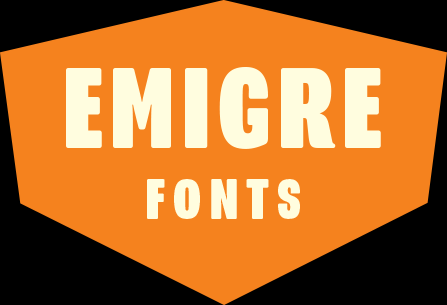Work From California (25th Biennial, Brno)
Interview by Jon Sueda. Published in 2012.
John Sueda: When did you move to California?
Rudy VanderLans: Zuzana moved to California in 1968. I arrived here in 1981.
JS: What where your preconceptions about California before moving here?
RvdL: My head was filled with images of California from all the movies, books, sitcoms, and music that I was familiar with, many of which were created and/or situated in California. Zuzana was seven when she arrived here. From the perspective of a child, living in 1960’s Czechoslovakia, California was the place from which everything new originated, and it was not available in communist Czechoslovakia.
JS: How does California manifest itself in your work?
RvdL: Much of my photography work focusses on California. And I love to weave bits of California history into the type catalogs I design. I really like the idea of place, and how, if you’re open to it, your geographical location can influence your work. I enjoy the idea of my work looking indigenous. I want it to be obvious that it was made in California. With the arrival of the internet and globalization, I began to notice a homogenization of styles within our profession. It became impossible to recognize where designs originated. And I was disappointed to see that loss of local color. So I started to look for ways to reintroduce what I felt was inherently California into my work.
JS: Several younger designers I’ve interviewed for this exhibition say that they see themselves as not bound to regionality, that their formal language is a result of the boundlessness of contemporary internet culture globalization. Do you think we are on the verge of an “International Style” 2.0? if so what do you perceive this “style” to be?
RvdL: When designers say that their formal language is the result of the boundlessness of contemporary internet culture globalization, I’m not sure what that means. If anything, what I read into that is the exact opposite of what the International Style was about, which was much more clearly defined. What’s happening now in design may be International, but it’s not a single dominant style. It’s a plurality of styles. Anything goes. And I have no problem with that. And to some degree I’m sure Emigre contributed to that. But currently, I relish the idea of being inspired, not bound, by regionality. In a world where everything is becoming less geographically specific, I’m suddenly more interested in what’s uniquely inherent in my neighborhood, or my city, or my state. But this is not some kind of call for regionality in design. It’s just a way to focus my attention. Because the boundlessness of contemporary internet culture globalization is pulling me into a million directions. And it’s simply not working for me.
JS: You once said in Emigre #20 Expatriates, when interviewing Robert Nakata and Allen Hori (a Canadian and American working in Holland at that time) that “…it never occurred to me until then that perhaps it was our ignorance of existing structures in our respective new homelands that provided us with the courage to be more adventurous. Ignorance is bliss.” Are you still able to hold onto this idea many years later?
RvdL: The lack of any kind of strong, deeply engraved, local traditions regarding type and typography in California allows you to work with complete abandon. That was greatly beneficial when Zuzana and I started Emigre in the 80s. But you’re always your own worst enemy when it comes to being creative. The longer you practice as a designer, the more critical you become of your own work, which can stifle creativity. So it’s always a struggle to be adventurous.
JS: Can you talk about your inspiration for the “Historia” Labels ?
RvdL: Historia started as a series of thirteen panoramic photographs depicting battlefield locations of the U.S.-Mexican war of 1846-1848 in California. After the completion of the panoramas, I wanted to incorporate captions and other texts directly into the images to provide background information and context. History offered me both precedent and inspiration. Nineteenth Century panoramic images, maps, and “bird’s-eye” views of popular and historical sites were often adorned with descriptions and keys elaborating on the subject matter of the image. Text and image were usually fully integrated into the image. But instead of simulating these historical styles, which were closely linked to the reproduction and typesetting methods of the time, I took liberty to try an approach that was evocative of various historical forms of American typographic styles but was made with distinctly contemporary design sensibilities and typefaces (from the Emigre Type Library). The result was a series of “labels,” one for each panorama, resembling a hybrid of antique bond certificates and California orange crate labels.


